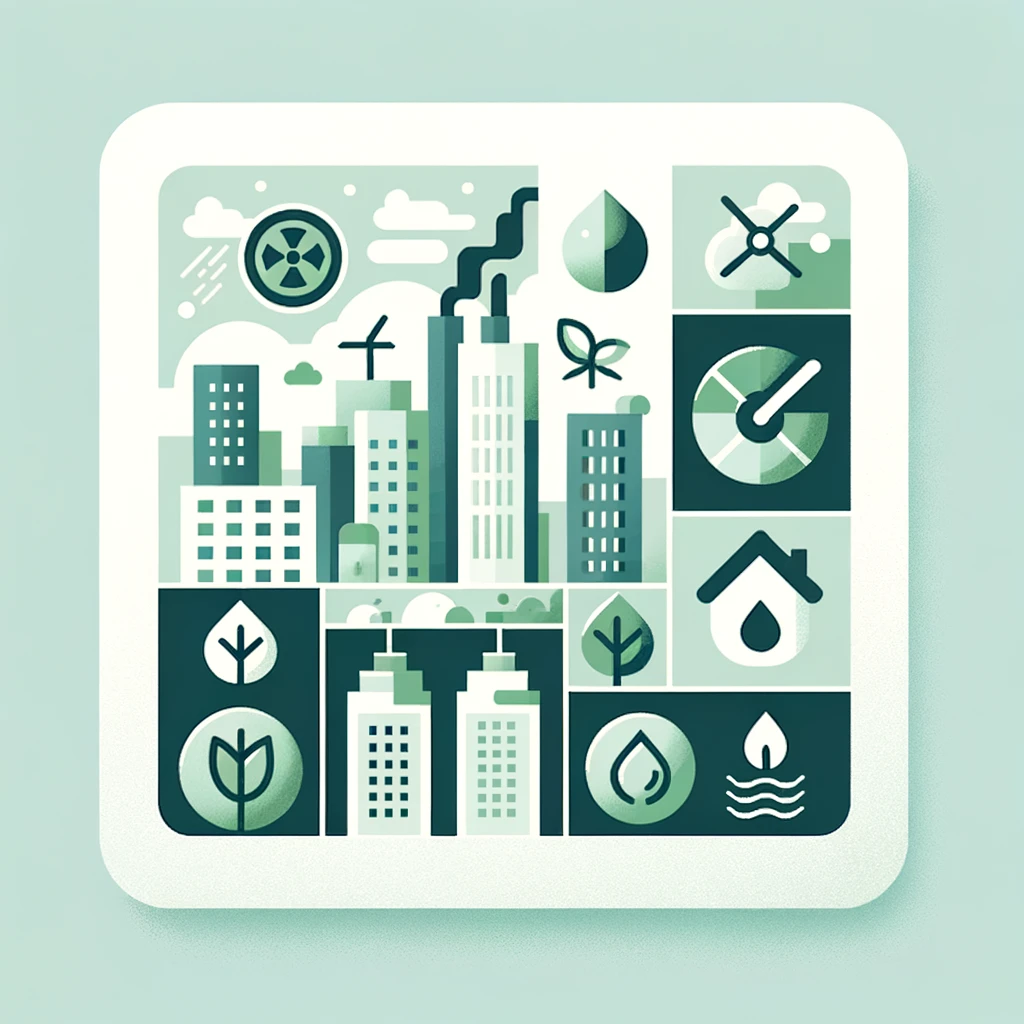Introduction
India’s urban landscape is growing at a rapid pace, driven by economic opportunities and development. However, this swift urbanization has raised concerns about the safety and sustainability of our cities. Recent incidents like the fire outbreak in Rajkot’s Game Zone and an oxygen cylinder blast in New Delhi highlight the urgent need for better urban planning and safety measures. This article explores the challenges of urban spaces in India and suggests strategies for creating safer and more sustainable cities.
Origin of the Article
This editorial is based on “Fires in Rajkot and Delhi: To get safer cities, we must demand them,” published in The Indian Express on May 28, 2024. The article discusses the need for safer urban environments.
Relevancy for UPSC Students
Understanding the complexities and challenges of urbanization is crucial for UPSC students. This topic aligns with the UPSC syllabus, particularly in GS Paper 2 under Urbanization, Government Policies & Interventions, and Local Self-Governance. It helps students grasp the practical aspects of urban governance and the importance of sustainable development.

Why in News
The topic of urban governance is crucial for UPSC aspirants due to its relevance in General Studies Paper 2, which covers governance, constitution, polity, social justice, and international relations. Recent incidents, such as fires in Rajkot and Delhi, underscore the urgent need for robust urban planning and safety measures. Previous UPSC questions have addressed urban challenges, such as solid waste management and urban floods, making this topic highly pertinent for both prelims and mains examinations. Understanding the dynamics of urban governance equips candidates to tackle questions on government policies, interventions, and the practical challenges of urbanization.
Framework Related to Urban Governance in India
India’s urban governance framework is a complex system involving multiple institutions and legal frameworks designed to manage urban development. Key institutions include the Ministry of Housing and Urban Affairs (MoHUA) at the national level, state departments, and municipal bodies, all working under the constitutional provisions provided by the 74th Amendment Act.
Institutions
Ministry of Housing and Urban Affairs (MoHUA): This central ministry formulates national policies and oversees central government schemes related to urban development, ensuring that urban growth aligns with national objectives.
State Departments of Urban Development: These departments implement central government policies and enact state-specific urban development regulations, adapting them to local needs and priorities.
Municipal Corporations/Municipalities: At the local level, these bodies are responsible for planning, development control, and service delivery within their jurisdictions, directly impacting the urban population.
Urban Development Authorities (UDAs): Special agencies established for the development of specific urban areas or projects, focusing on large-scale urban planning and infrastructure development.
Constitutional and Legal Frameworks
Constitution of India (Articles 243Q, 243W): These articles empower local governments (Municipalities) for urban planning and development within their jurisdictions, ensuring decentralized governance.
74th Constitutional Amendment Act, 1992: This landmark amendment provided constitutional status to urban local bodies and added Part IX-A to the Constitution, promoting greater autonomy and accountability in urban governance.
Did you read about Theories of the Origin of Life on Earth?
Major Challenges Related to Urban Spaces in India
Urban spaces in India face numerous challenges, including inadequate housing, severe air pollution, traffic congestion, and ineffective solid waste management. These issues hinder sustainable development and the quality of life in cities.
Inadequate Housing and Slum Proliferation
Urban housing shortage is a significant issue, with a deficit of around 18.78 million units projected between 2012-27. Over 65 million people live in slums, highlighting the urgent need for affordable housing solutions.
Air Pollution and Environmental Degradation
Air pollution in Indian cities is severe, driven by vehicular emissions, industrial activities, and construction projects. According to the World Air Quality Report 2023, nine of the top ten most polluted cities are in India.
Traffic Congestion and Mobility Challenges
Rapid urbanization and the increase in private vehicles have led to severe traffic congestion. For instance, Bengaluru’s average traffic speed during peak hours is around 18 km/h, resulting in significant productivity losses.
Inadequate Solid Waste Management
Indian cities struggle with managing solid waste, leading to health hazards. The Central Pollution Control Board reports that only 20% of the 62 million tons of municipal solid waste generated annually is processed.
Issue of Cybersecurity and Resilient Digital Infrastructure
Digital threats are rising with urban digitalization, as highlighted by the 2022 ransomware attack on AIIMS Delhi, emphasizing the need for resilient digital infrastructure.
Water Scarcity and Inadequate Water Management
Many Indian cities face acute water shortages due to rapid urbanization and depleting groundwater levels. The 2019 Chennai water crisis and recent water issues in Bengaluru are stark examples.
Urban Heat Island Effect and Lack of Green Spaces
Rapid urbanization and loss of green spaces contribute to the urban heat island effect, increasing temperatures and energy demand. Delhi’s power demand reached over 8,000 megawatts in May 2024.
Rising Cases of Fire Hazards
Urban areas face significant fire hazards due to inadequate fire safety infrastructure, exacerbated by high population density and narrow access routes, hindering emergency response.
Urban Flooding and Drainage Infrastructure
Inadequate drainage systems and encroachment on water bodies cause frequent urban flooding. Major floods in cities like Hyderabad, Chennai, and Delhi highlight the need for better infrastructure.
Major Government Initiatives Related to Urban Areas
The Indian government has launched several initiatives to address urban challenges and promote sustainable development, including the Smart Cities Mission, AMRUT Mission, and Swachh Bharat Mission-Urban.
Smart Cities
This initiative aims to develop urban areas with smart infrastructure, leveraging technology to improve efficiency and quality of life for citizens.
AMRUT Mission
The Atal Mission for Rejuvenation and Urban Transformation focuses on providing basic urban infrastructure, including water supply, sewerage, and urban transport.
Swachh Bharat Mission-Urban
Aimed at promoting cleanliness and sanitation in urban areas, this mission has significantly improved waste management and public health.
Pradhan Mantri Awas Yojana-Urban
This initiative targets ensuring housing for all by 2022, addressing the urban housing shortage and improving living conditions in slums.
Aspirational District Program
Focused on transforming underdeveloped districts, this program aims to improve socio-economic indicators and promote inclusive urban development.
Deen Dayal Antyodaya Yojana – National Urban Livelihood Mission (DAY-NULM)
Aiming at improving the livelihood of the urban poor, this mission focuses on skill development and employment opportunities.

Strategies to Revitalize India’s Urban Landscape
To ensure sustainable urban development, India needs innovative strategies, including decentralized waste management, smart water systems, and digital twins for urban planning.
Distributed Waste-to-Energy and Decentralized Waste Management Systems
Incentivizing community-based waste management and promoting public-private partnerships can improve waste collection and processing. Small-scale waste-to-energy plants can convert municipal waste into renewable energy.
Smart Water Management and Recycling Infrastructure
Deploying smart water metering systems and investing in advanced wastewater treatment facilities can optimize water usage and promote recycling.
Urban Digital Twins and Predictive Modeling
Developing digital twins of urban areas for simulation and analysis can enhance urban planning. Leveraging AI and predictive modeling can optimize resource allocation and infrastructure management.
Sponge City Concept and Permeable Urban Landscapes
Implementing permeable pavements and green roofs can mitigate urban flooding. Preserving natural water bodies and incorporating biophilic design can enhance urban resilience.
Smart City Infrastructure
Democratizing smart city technologies, such as intelligent traffic management and IoT-enabled services, can improve urban efficiency and reduce carbon emissions.
Real-time Fire Risk Assessment and Alert System
Deploying sensors and using AI for fire risk assessment can enhance urban safety. Real-time alerts can help residents and authorities respond promptly to fire hazards.
Cybersecurity and Digital Infrastructure Resilience
Investing in robust cybersecurity measures and redundancy mechanisms can protect urban digital infrastructure from cyber threats and ensure the continuity of essential services.
By adopting these strategies, India can revitalize its urban landscape, addressing the challenges of rapid urbanization and promoting sustainable development.
Conclusion
In conclusion, the path to sustainable urbanism in India demands a harmonious blend of economic progress, safety, and citizen well-being. Policymakers and citizens alike must champion innovative urban planning and governance models. As future civil servants, your role will be pivotal in shaping cities that are not only thriving but also resilient and inclusive.

